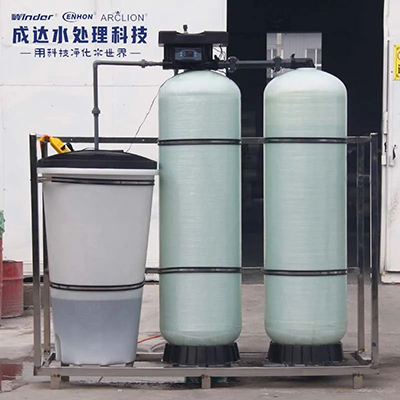Softened water equipment is a Water Treatment System used to soften water. Its main function is to remove calcium and magnesium ions in the water to produce soft water. This article will talk about some matters that need to be paid attention to when installing softened water equipment.

The installation precautions for softened water equipment are as follows: 1. The softened water equipment must be installed on a solid horizontal surface, and there should be drainage pipes nearby. 2. The salt tank should be placed close to the Resin tank. In order to increase the salt absorption rate, the length of the salt absorption pipe should be shortened as much as possible. 3. Filling quartz sand: Before filling, the central tube should be placed in the center of the resin tank, then quartz sand should be put in, and the sand layer should be paved at the bottom of the tank. 4. Filling resin: Put the processed resin into the resin tank according to the approved filling amount. 5. Align the upper end of the central tube with the socket in the center of the bottom of the control valve, and carefully turn the control valve clockwise (note: during the installation of the control valve, be sure to ensure that the central tube is inserted into the valve body) until the control valve is tight. On the tank. 6. Connect the pipes and power supply as shown in the installation schematic diagram. 7. When starting the softened water equipment, you should close the bypass valve, then open the outlet control valve, and finally slowly open the inlet control valve (Note: If the inlet control valve is opened too fast, water and residual air in the pipe will enter the water softener, causing The resin flows out of the resin tank with the water flow). 8. Set the time and program controller according to the method introduced in the manual. In the initial stage of use, it is necessary to strengthen water quality monitoring and adjust the restoration program according to changes in water quality to keep it in optimal working condition. 9. There should be enough regenerant in the Brine Tank to ensure the amount of salt used for the next cycle of regeneration. 10. After the above installation and debugging, sampling and testing will be carried out. If the water quality meets the requirements, water will be available.



